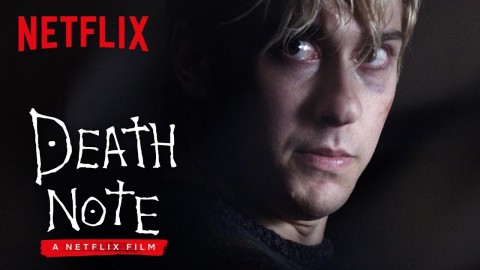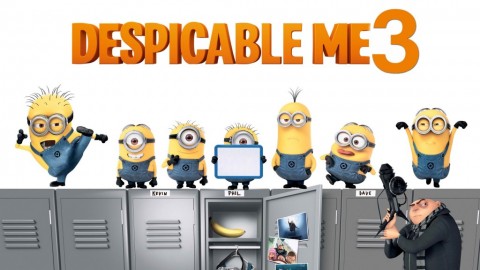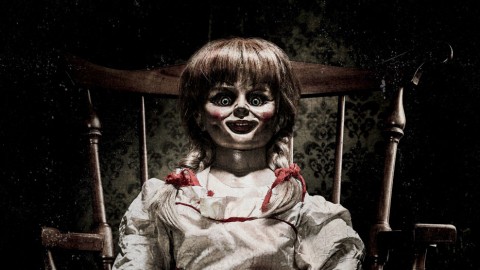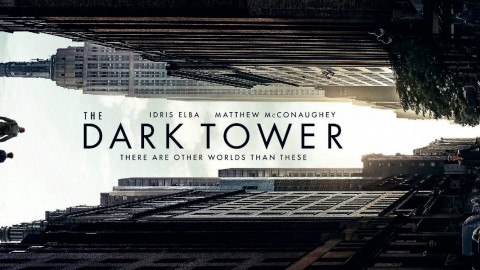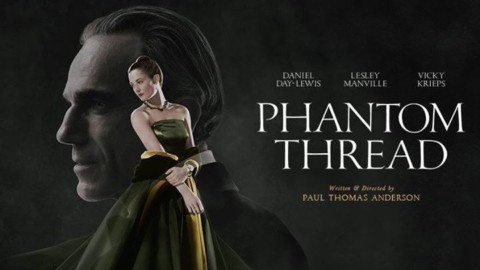Directors: Ron Clement, Don Hall, John Musker, Chris Williams.
Writers: Jared Bush, Ron Clements, John Musker, Pamela Pibon, Taika Waititi.
Cast: Auli’i Cravalho, Dwayne Johnson, Jermaine Clement, Temeura Morrison, Nicole Scherzinger, Alan Tudyk.
Music: Lin-Manuel Miranda, Mark Mancina, Opetaia Foa’i.
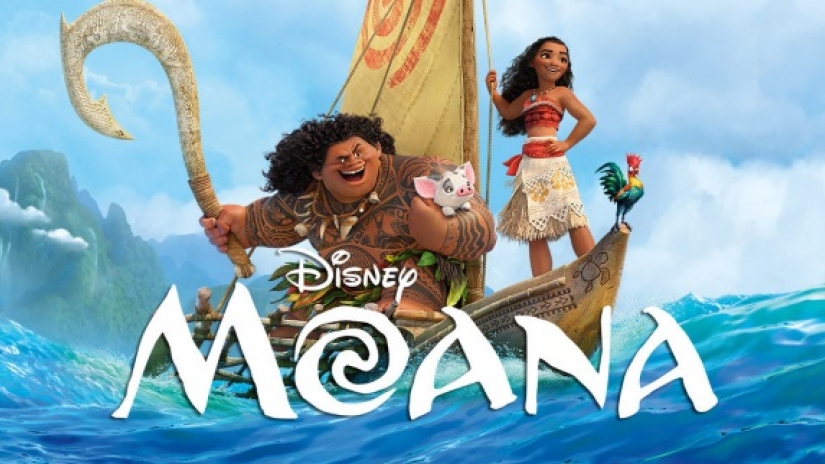
Accused of ethnic stereotyping and whitewashing, Disney Animations set out to fix something that from a business perspective isn’t even broken. MOANA is blurted out with every good intention and puts forward the question as to whether it is a success of just a brilliantly strategized illusion. Controversies have been abounding around the veiled generalization of the Polynesian culture by portraying the islanders as stereotypically overweight and selling tattooed bodysuits as children’s Halloween costume. With all its quirks and issues, it is still unfair to deny the dregs of credit where it is ironically due and thus the importance and consequent perilous afterthoughts come to light concerning the movie.
The Polynesian mythology has been brought to screen around an inspiring and adorable protagonist named Moana (Auli’i Cravalho), who was raised in the isolated Motunui island, vibrant with colours and embodying life in the lap of bounteous mother nature. The self-sustaining community is safeguarded by Chief Tui’s (Temeura Morrison) strict rule that forbids venturing out beyond the reef and thus Moana’s craving for the open oceans face regulations until the sassy rebel is convinced 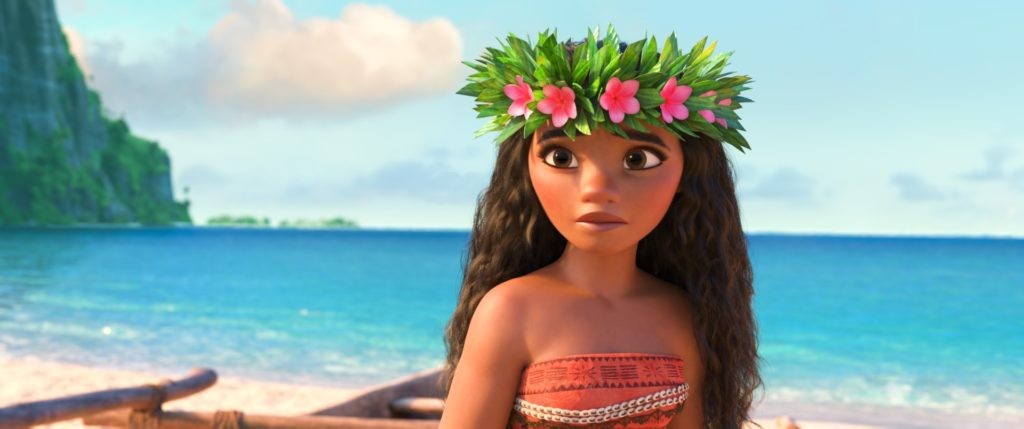 by Gramma Tala (Rachel House), the village elder, to embrace her ‘wayfinding’ call to stop an ecological blight that had been brewing since time immemorial. Moana, brought up amidst tales of the gods, is tasked to find the demigod Maui (Dwayne Johnson) and deliver him to restore the glowing emerald heart of Te Fiti by journeying across the perilous seas, navigating the narcissistic tantrums of the demigod, with the help of a googly-eyed rooster called Heihei (Alan Tudyk), the sentient ocean and her wits.
by Gramma Tala (Rachel House), the village elder, to embrace her ‘wayfinding’ call to stop an ecological blight that had been brewing since time immemorial. Moana, brought up amidst tales of the gods, is tasked to find the demigod Maui (Dwayne Johnson) and deliver him to restore the glowing emerald heart of Te Fiti by journeying across the perilous seas, navigating the narcissistic tantrums of the demigod, with the help of a googly-eyed rooster called Heihei (Alan Tudyk), the sentient ocean and her wits.
The South-Pacific adventure dares to tackle sensitive subjects and, in a broad stroke, comes out with flying colors. The writers had a difficult job of incorporating a cultural heritage with its traditions, language and lore into a story which promised a departure from the formulaic Disney princess outings but ended up as a far cry from the intentions. Moana, no matter how detached her layout is, emulates the characteristics of wading through trials to construct her identity and sadly gropes at female empowerment clichés, rather than being a genuinely feminist tale. The subtle innuendos towards the awareness of the princess trope might incite some chuckles but remains unable to hide the underlying mould that created many other protagonists for the animation conglomerate. From a superficial glance, MOANA should be hailed for creating a self-sufficient protagonist who isn’t cocooned by any love-interest as the patriarchal structure demands but it doesn’t help that the process of crafting such brazenly feminist figure is also marked by a plethora of external initiations while her own volition gets trumped by the stereotypically 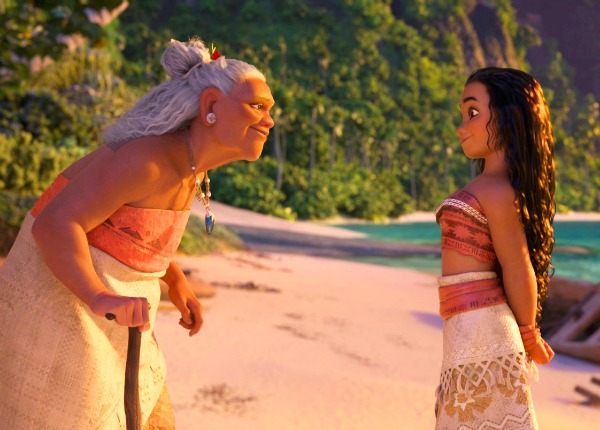 portrayed utopic life of the islanders. The bold decision of presenting the demigod as a second fiddle is trampled under the fact that it unabashedly victimizes the mythology through the erasure of Maui’s goddess companion, Hina, who enabled him to achieve many of the feats he uncharacteristically brags about in the film’s song “You’re Welcome!”
portrayed utopic life of the islanders. The bold decision of presenting the demigod as a second fiddle is trampled under the fact that it unabashedly victimizes the mythology through the erasure of Maui’s goddess companion, Hina, who enabled him to achieve many of the feats he uncharacteristically brags about in the film’s song “You’re Welcome!”
The movie finds itself running through the progressive motions of optimistic ambience, initial turbulence, transitional mesmerizing and final tension to Disney’s trademark denouement, all the while painting luscious romantic landscapes on the canvas. This further begs the question whether MOANA is the ecocritical triumph or the commodification of nature herself, which isn’t all that new to many indigenous cultures around the globe. The eponymous protagonist is rendered a mouthpiece for the pseudo-feminist agendas under the entertainment which, however, the movie is replete with. The astounding visuals offer up one memorable sequence after another with imaginative world-building through coconut-minions Kakamora, although being an insensitive comedy staple since 1960’s ‘Giligan’s Island’, and the monster realm of Lalotai where a giant crab called
Tamatoa (Jemaine Clement) brings to the screen the much appreciated bizarre in his fascination with everything shiny.
While MOANA brings a lot to the plate, it is scanty in substance but welcomingly burdened with artistic grandiose, owing to the competent animation department that flawlessly brought to life the waves and frizzy locks. The substance is a rehashed tale of corruption of nature laced with a not so subtle rendition of Western subversion of the indigenous cultures. The movie dwindles
and subsequently triumphs, crawls and runs, but what undoubtedly deserves praise is the range of the voice cast in debuting 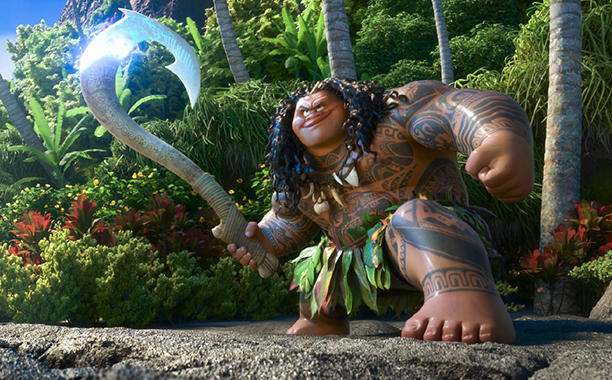 Auli’i Cravalho, Dwayne Johnson and the squeaking Alan Tudyk, who brought to the computerized projections a warm feeling. The chemistry and the banter between the leads often remind of Anna and Kristoff from FROZEN and Judy and Nick from ZOOTOPIA. The comic timings sometime appear to be dragged with Johnson lending only his voice, thus his charisma trying too hard to be felt through his storytelling pecs (sadly there’s no pec pop of love).
Auli’i Cravalho, Dwayne Johnson and the squeaking Alan Tudyk, who brought to the computerized projections a warm feeling. The chemistry and the banter between the leads often remind of Anna and Kristoff from FROZEN and Judy and Nick from ZOOTOPIA. The comic timings sometime appear to be dragged with Johnson lending only his voice, thus his charisma trying too hard to be felt through his storytelling pecs (sadly there’s no pec pop of love).
Finally, what renders a Disney animated flick a masterpiece is its music. Just like in the pursuit of authenticity the movie fetched in a range of talents of Samoan and Hawaiian heritage, the music department is blessed with Opetaia Foa’i, who traces his heritage to the island nations of Tokelau and Tuvalu and blends the uniqueness of the language with the Broadway features brought forth by Lin-Manuel Miranda, as he leads a chorus through distant chants and rumble of drums into the harmonized mass in ‘We Know the Way’. On screen, as the ancient voyagers proudly navigate through the seas in their outrigger canoes, Moana gets in touch with herself and breaks into singing ‘We know who we are’ and imbues herself with confidence and surety to bring about the pinnacle of the musical offerings. The chanting pervades throughout the music but one cannot identify with it amidst the overpowering and robust composition of Lin Manuel Miranda and Mark Mancina, who try to recreate the Disney classics. The praiseworthy effort becomes a sweet hotchpotch of musical styles that dilute the cultural purity because no matter how sweet it is, it’s still a hotchpotch. The greatness of ‘A Whole New World’ or ‘Let It Go’ draws from the clear vision of melody, although squandering the cultural authenticity, and thus MOANA’s music with its lyrical simplicity demands to be stripped of the dilemma.
The promotion of authenticity fares irregularly with appreciable details to the canoes at one hand and gross generalizations on the other. At the end, when the criticisms wane, one can’t overlook the fact that it is, in a sense, the revival of Hokule’a, the large canoe which was launched by the Polynesian Voyaging Society in 1970s to dismantle the Western cynicism and resurge the interest in native history and traditions. But with its visible misappropriations, it also reminds Auli’i Cravalho’s own sentiment that a culture cannot be captured fully through lenses as it is not some features or something ‘you just stop by and see’. While debates cloud the movie, baby Moana, with her curious eyes, surely deserves a peak from the audience who want to let go and enjoy a soul-warming saga.
My Verdict
My Ratings
2.5
While debates cloud the movie, baby Moana, with her curious eyes, surely deserves a peak from the audience who want to let go and enjoy a soul-warming saga.

